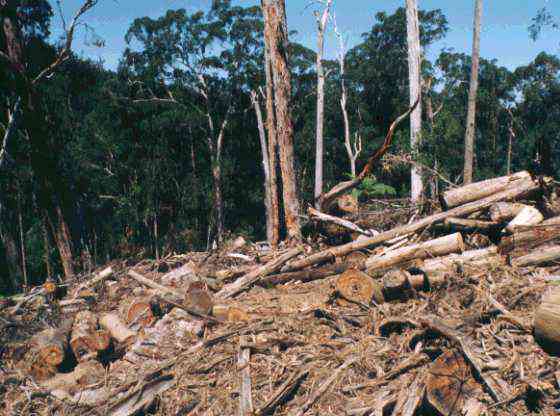 |
LOGGING IN GIPPSLAND FORESTS
Fiona Wilson's communication project
BIOLOGICAL CONCEPTS
| Many biological factors are
effected by the logging industry cutting down the East Gippsland forests. East Gippsland
contains rare forest types, rainforest, threatened species and old growth. Many of the
most endangered species of Victoria are situated in the Gippsland forests. It covers a
tiny 4% of the state of Victoria and yet supports over 300 rare and threatened species
(Green Net Australia, 1999). Even knowing this between 5,000 and 8,000 hectares of forest
area are clear felled in East Gippsland every day (Green Net Australia, 1999). The impact
this has on this very delicate ecosystem is great. Gippsland forest provides valuable, undisturbed habitat for at least three endangered species, the critically endangered Tiger (Spotted) Quoll the Long Footed Potoroo and the Sooty Owl. With the logging in the area the undisturbed habitat for these animals can not be sustained. Although trees are able to recover from such natural disasters as fire, it is not always possible when large amounts of logging takes place. In East Gippsland regeneration failure is high with some regions as high as 70-80% of the forest unable to regenerate itself (CREOG, 1999). Since logging has taken place in the Gippsland area, flooding as increased dramatically as a result. Acres of farmland were ruined due to furrowing erosion and lost topsoil. Weak re-growth destroyed before it had a chance for the forest to regenerate itself. Before the area was clear felled the forest worked to knit together the soil, buffering the impact of the heavy rain. Now with the result of logging the ecosystem is no longer able to lessen the amount or force of the floodwater. |
 |